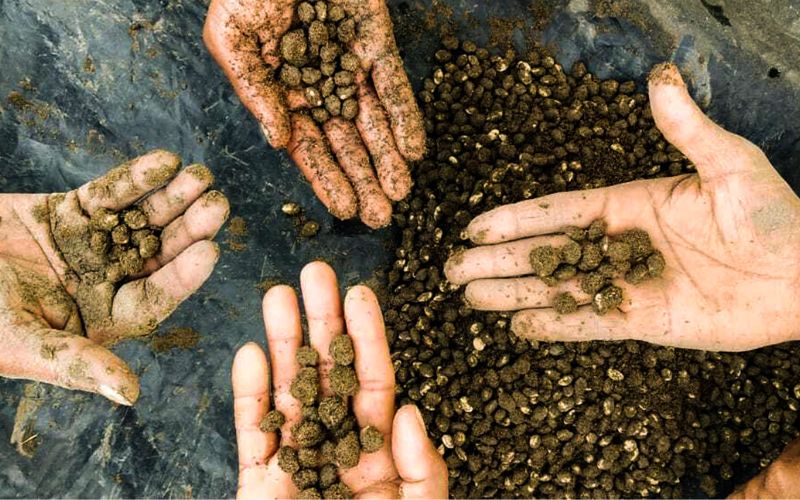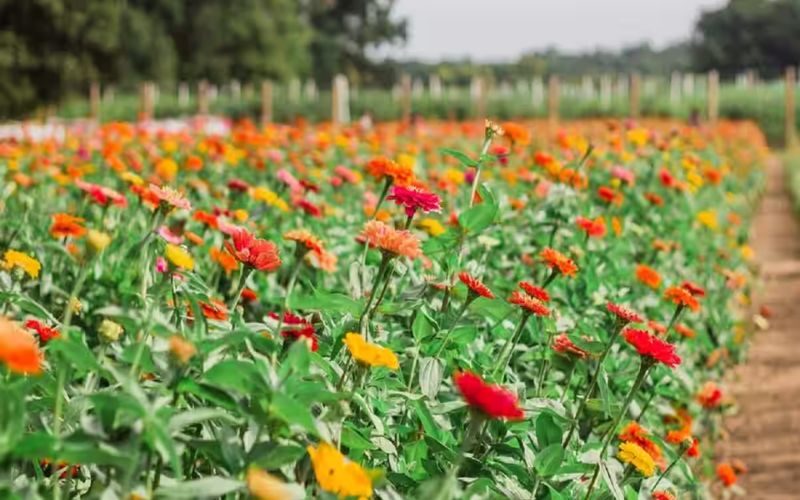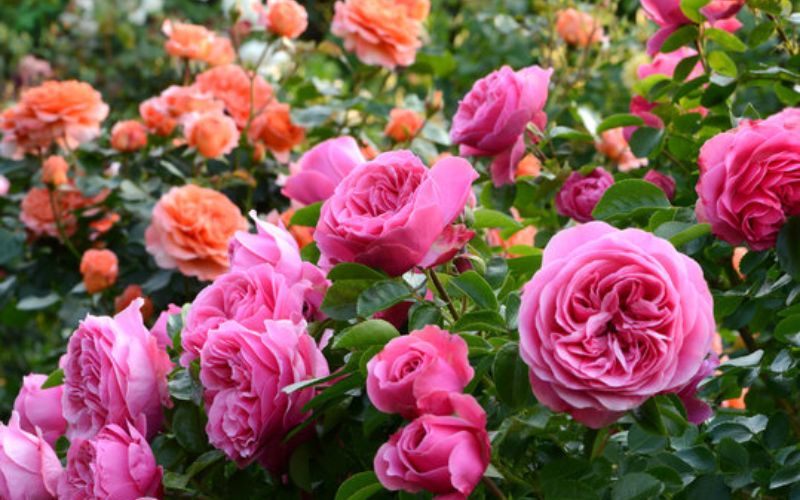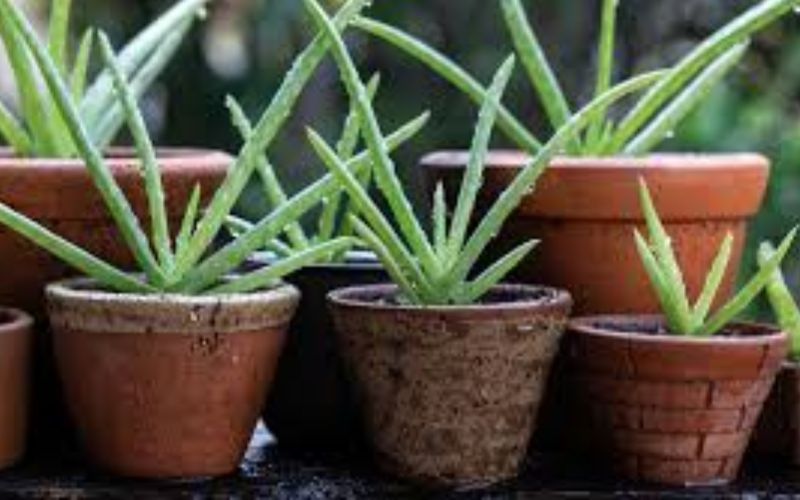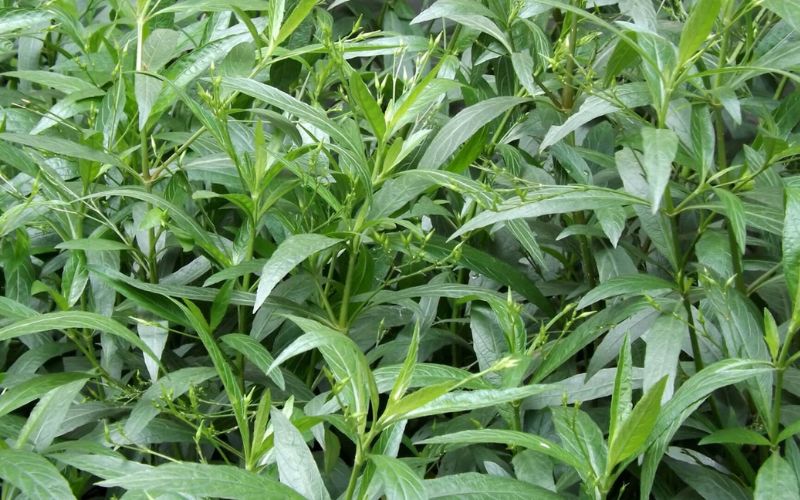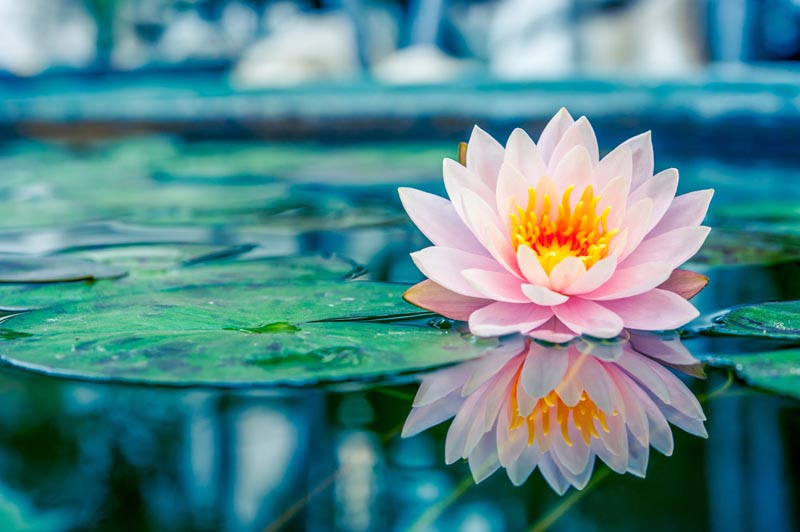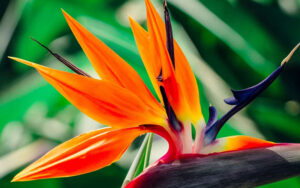How to grow holy flower of lotus

Dr. Amar Singh
Former A. Chief technical officer,
I.A.R.I
Lotus (botanical name: Nelumbian nucifera) is a plant of the botanical world, in which large and beautiful flowers bloom. The lotus plant (Kamalini, Nalini, Padmini) grows in water and is found in all the tropical parts of India and from Iran to Australia. The lotus flower is white or pink in color and the leaves are almost round, shield-like. A kind of fiber is extracted from the long stems and veins of the leaves, which are used to make temple lamps. It is said that wearing cloth made from this fiber cures many diseases. The stems of the lotus are long, straight and hollow and spread around in the mud under water. Roots emerge from the nodes of the stems.
Lotus flower
If you are excited to learn how to grow lotus, this is the best guide for you. Learn all about growing and caring for a lotus plant.
In recent years there has been an increased interest in growing the lotus plant among gardeners. Also, growing and caring for a lotus is a little different from the plants we grow in soil. But the beauty that the lotus creates in the garden is unbelievable.
And I think you are the one who wants to make your garden more beautiful by planting lotus plant. But, confused where to start and how to take care? Don’t worry, in this article Agriculture Review will guide you on how to grow and care for your lotus plant.
It will help you to know in detail about the growing season, methods of propagation, potting mix, sunlight, pests and diseases etc.
Introduction:
Sacred Lotus or Indian Lotus or Nelumbo nucifera is a species of herbaceous perennial flowering aquatic plant. It is native to central and northern India. The lotus is also the national flower of India and Vietnam. Depending on the variety, the height of the lotus can range from 8 to 12 inches to 6 feet.
Along with its beauty, lotus has many benefits and uses. The seeds can be used to make herbal oils and medicines. Leaves, flowers and roots can be used in decorations. People in many parts of the world use the rhizome of the lotus as a vegetable.
However, lotus is a very fast growing plant! So once you start growing lotus it will spread very fast. Let’s learn about growing lotus now!
Uses of lotus:
- Lotus flowers, seeds, young leaves and rhizome are all edible.
- In Asia, the petals are sometimes used for decoration, while the larger leaves are used as wraps for food.
- Various parts of the sacred lotus are also used in traditional Asian herbal medicine.
- The tender seeds are chewed with joy in North-East India.
- Lotus stem is eaten in almost all parts of India and pickle is also made.
- Young lotus stem is used as a salad ingredient in Vietnamese cuisine.
- Distinctive dry seed tops, which resemble the spout of a watering can, are widely sold around the world for ornamental purposes and dried flower arrangements.
- Lotus rhizome is used as a vegetable in soups, deep-fried, stir-fried and braised dishes.
- Lotus rootlet is often pickled with rice vinegar, sugar, chili and garlic.
- Aromatic herbal tea can be made by drying the stamens in Vietnam.
- Lotus seeds or nuts can be eaten raw or dried and popped like popcorn.
- In South Indian states, the lotus stem is cut, marinated to dry with salt, and the dried slices are fried and used as a side dish.
- In Sri Lanka, Sliced Lotus Stem Curry is a popular dish called “Nelam Aala”.
- In Myanmar, a unique cloth is prepared from the fibers of the lotus plant.
- The leaves are used as a flavoring agent and to wrap sweet and spicy mixtures (rice, meat, fruit, etc.) for steaming.
Weather:
You can grow lotus very easily in Indian climate. It can survive in temperate as well as tropical to sub-tropical regions. But, the lotus plant does not like extreme cold or heat.
It can thrive well in the summer season in areas with a temperature of 20 to 35 °C. Spring is considered the best season for the propagation of lotus plant.
Soil mix:
Lotus can grow well in a mixture of sand and clay. Do not use loamy loam soil or other types of soil mix that you use to grow garden plants. But, if sand and clay are not available then you can use normal garden soil.
The only problem is that normal clay or loose soil can float in water. To prepare the soil mixture for growing lotus, mix 60% clay + 40% sand.
Selection of pots:

Lotus pot style
You have to choose two types of pots to grow lotus. A big one which is probably a tank or tub. And another small one to hold the roots of the plant. Make sure there should be no drainage holes.
Small pots can be 4 to 8 inches in diameter and 7 to 9 inches deep. Whereas the depth of the large pot or pond or tank or tub should be at least +2 to 4 inches deeper than the small pot. There is no limit to the diameter or horizontal length of a large water tank.
However, lotus grows mainly in shallow water so make sure your pond, or tub, is not deeper than what I mentioned in this article. However, the depth of the large pond should be such that it can submerge the growing branches under water and the leaves are left out!
Methods of dissemination:
You can propagate lotus from seeds, tubers and rhizomes. However, if you grow lotus from seeds, it will take about a year for the plant to flower. However, in this article I have discussed lotus propagation from seeds and tubers.
How to grow lotus from seed? 
Lotus seed
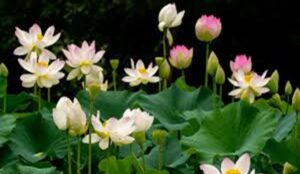
lotus flower grow from seed
To grow lotus from seeds, you can buy seeds from online stores like Amazon and Flipkart. Once you have purchased the seeds, use a scraping paper or knife to scrape off the pointed end of the seed.
Stop scraping once the cream colored core is visible. Do this step very carefully to avoid any damage. After scraping the seed, put it in a transparent cup or a container and fill it with water. Make sure the water temperature should be around 24 to 27 degree Celsius.
Keep it indoors, and check for seeds floating in the water the next day. Remove the floating seeds from the water and leave the submerged seeds in the container. Floating seeds will not germinate.
Change the water in the container daily. The seeds will start to germinate in 7 to 10 days. Once the seeds have germinated, change the water very carefully on a daily basis. You can start transplanting when your seedlings reach a height of 6 inches and develop one to two small leaves.
Transplantation:
If you have sprouted lotus seeds you will need to transplant it. Gardeners often make this mistake of planting lotus plant at a very early stage. Once you notice one to two leaves growth in the seedlings you can start transplanting.
Fill the potting mix in a small container and place the sprouted seeds on the soil. Cover the seed with a one-inch layer of soil and place a few small stones around the base. Carefully submerge this vessel in the tub of water.
Keep the leaves on the surface of the water after they sink and the branches should remain in the water. Place your tub in semi shade until your plant is well established. After 2 to 3 days you can move the tub out into direct sunlight.
If your tub is large and you cannot move it easily, you can also do this procedure in direct sunlight. After transplanting, you do not need to change the water daily.
How to grow lotus from tubers?

Lotus Tuber lotus flower grow from tubers
To grow lotus from tubers, buy it from the nearest plant nursery or online store during the spring season. Once you’ve got the tubers let’s get started!
Fill the larger tank with water and the smaller tank with potting mix. Water evenly in the small flowerpot to moisten the soil. Place the tubers on the soil and keep the growing areas such as the leaf part facing up. Cover the tuber slightly with soil but do not completely submerge it in the soil.
Put some small stones on the covered part of the tuber so that it does not float in the water. Now is the time to submerge the small flowerpot in the tank or tub. The water level in the larger pot or tub should be 2 to 4 inches higher than the height of the smaller pot.
Place your pot in a sunny spot that receives strong sunlight, and after 4 to 5 days you will see new growth in the lotus tuber.
Lotus plant care:
Once you have successfully grown a sacred lotus plant, you need to know about some important points like sunlight, water temperature, fertilizers, pruning, pests and diseases etc. Knowing about these important points will help you take great care of your plant.
The lotus plant likes bright direct sunlight to grow and flower. Place the lotus tub in an area that gets at least 5 to 6 hours of direct sunlight daily. Sunlight helps in vegetative growth of the plant.
Water temperature and pH:
Water temperature is another factor that affects plant growth. Make sure the water temperature remains slightly warm. The ideal temperature range of water for growing lotus is 21 to 32 degree Celsius.
If you live in cold or temperate regions where standing water can freeze, you can use an automatic electric water heater. This is what we use in aquariums. You can set the temperature and relax.
Water should not be alkaline to grow lotus. Water with a neutral pH of 6.0 to 7.0 is good for growing lotus plants.
The sunlight:
The lotus plant likes bright direct sunlight to grow and flower. Place the lotus tub in an area that gets at least 5 to 6 hours of direct sunlight daily. Sunlight helps in vegetative growth of the plant.
Fertilizer:
By the way, most of the gardeners start getting confused in fertilizing aquatic plants like lotus. But it is not a difficult task. You can fertilize your aquatic plant with pond tablets or liquid fertilizers. I recommend you buy Pond’s pills.
A smaller lotus plant will need two tablets after every 30 days, while a larger one will do well with 3 to 4 tablets. But, stop fertilizing your lotus plant from July to early spring. As the plant has to be prepared for winter dormancy.
Once it reaches the 6 to 8 leave stage, you can start fertilizing your plant. Use a composting tool or your hands to push the tablets deep into the soil.
Cutting and Pruning:
Pruning is an essential step in caring for your lotus plant. Prune dead or yellowing leaves, branches and flowers from time to time to maintain the health of your plant. Lotus is a very fast growing plant and will spread very quickly in a tub or pond.
Keep pruning new growth as needed to maintain good growth. This will help maintain the proper shape of the plant.
Pests and diseases:
Like other garden plants, lotus can be affected by pests and diseases. Some common lotus pests are aphids, caterpillars, white flies, spider mites, leaf miners, etc. that can harm your plant.
Never use liquid insecticides whether organic or inorganic to control pests on a lotus plant. Liquid insecticides can harm this plant. Buy any powdery insecticide that is good for aquatic plants to control lotus pests.
Water depth:
In the spring, place the small pot in water at least 2 inches deep. However, in the fall, slightly increase the depth according to the increase in the length of the branches. It is mainly recommended for places with cold winters. However, if you live in areas with a moderate climate, you don’t need to worry too much about the depth. Simply submerge the flowerpot in water at least 2 to 4 inches deep.
Conclusion:
Lotus is a famous flower for everyone, especially in our country where it is considered as the national flower. The lotus has many practical uses, beneficial uses (as medicine) as well as cultural uses (to worship God).
Normally we collect lotus from the spontaneous growth of the plant, but commercially cultivating the plant is out of conception. The growing demand for the lotus flower in particular has prompted farmers and lotus lovers to think about it. For those who are busy but want to maintain a water plant, this is the right choice.
Maintenance of lotus plant does not require much time nor is it technically complicated. Durga Puja is an important festival all over India especially in West Bengal. According to rituals, there is a huge demand for lotus flowers during this festival.
108 lotus flowers are required in each puja pandal. Therefore, it takes time to calculate the number of lotus flowers required. Then the price of the flower doesn’t matter, but the availability of the flower is really a matter.
So there are good business opportunities. To capture that potential, farmers must be driven by public or private extension systems.


